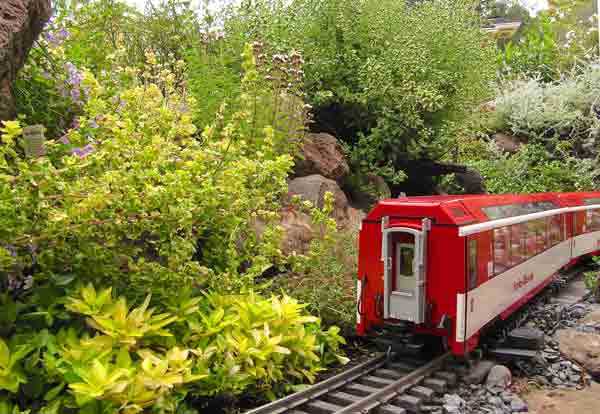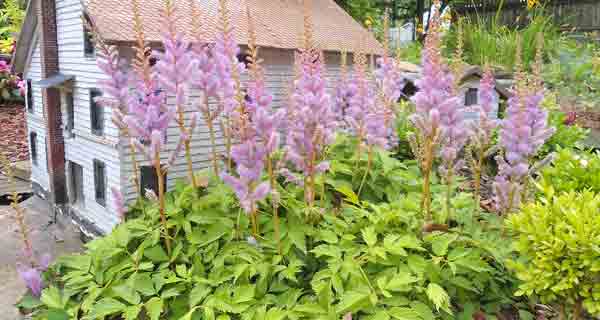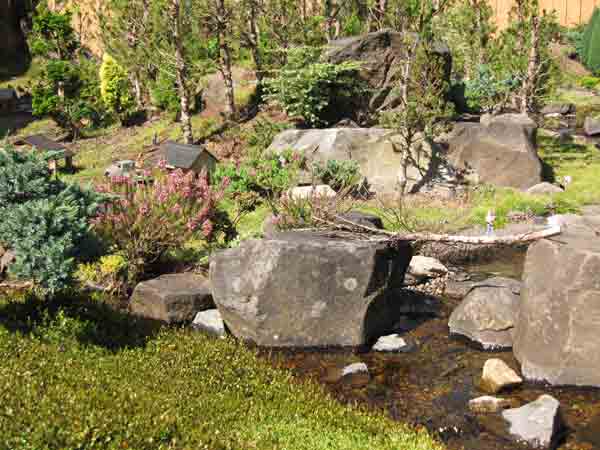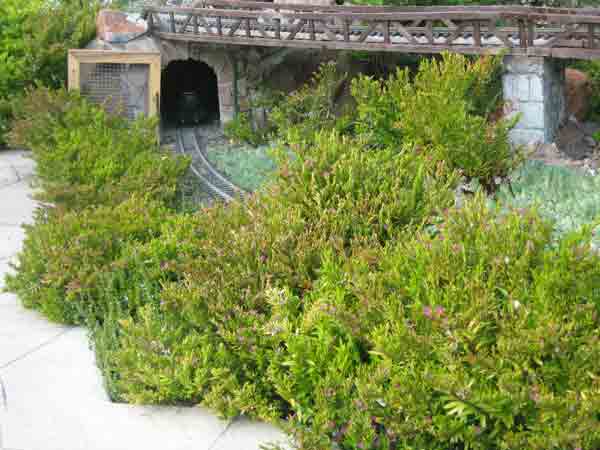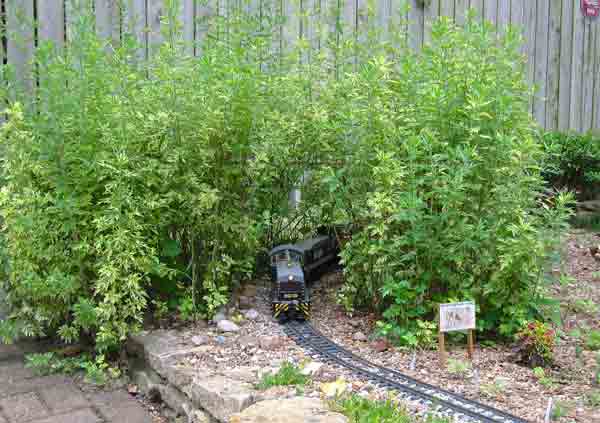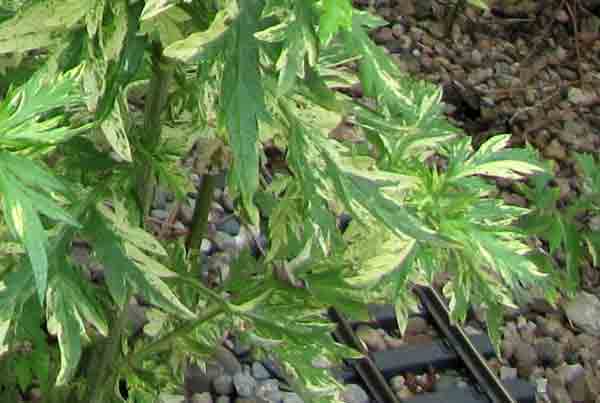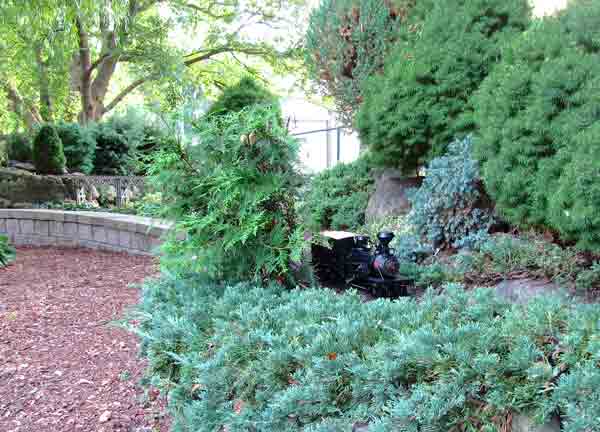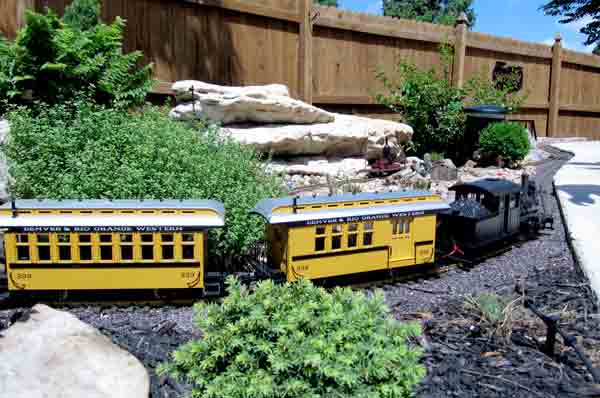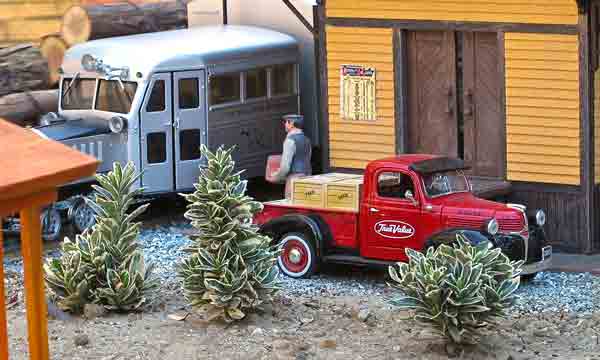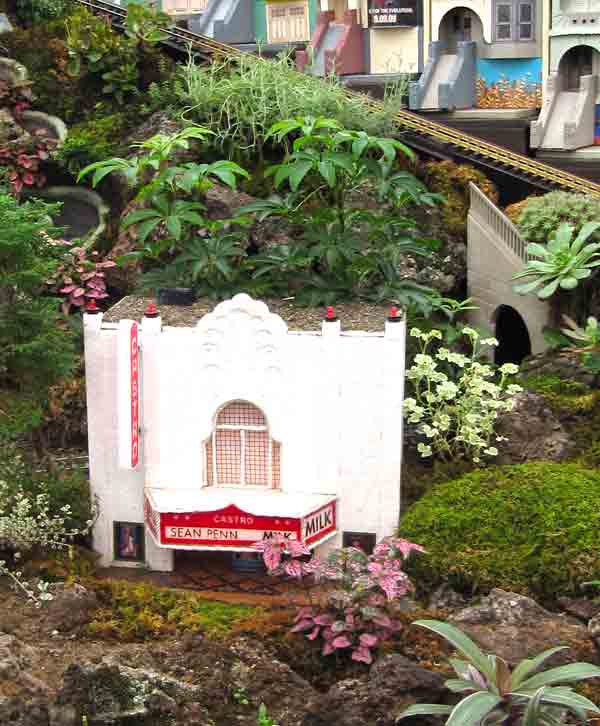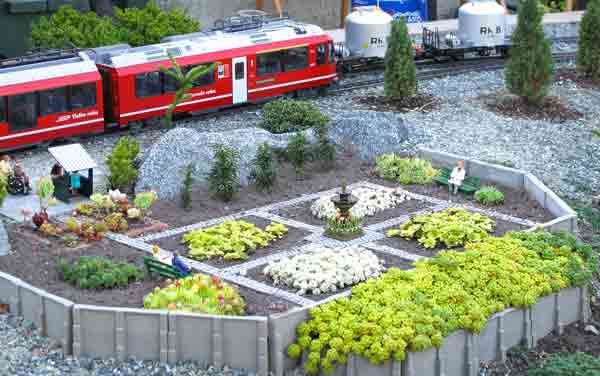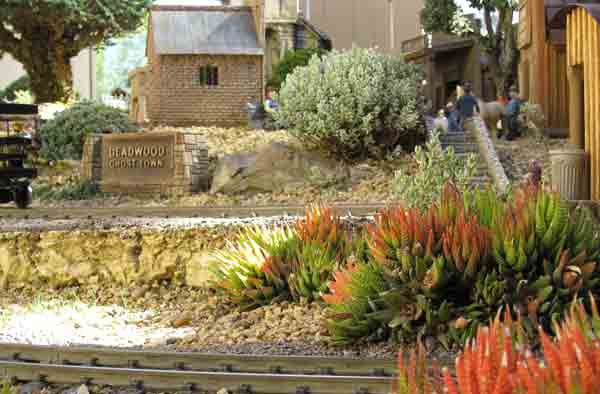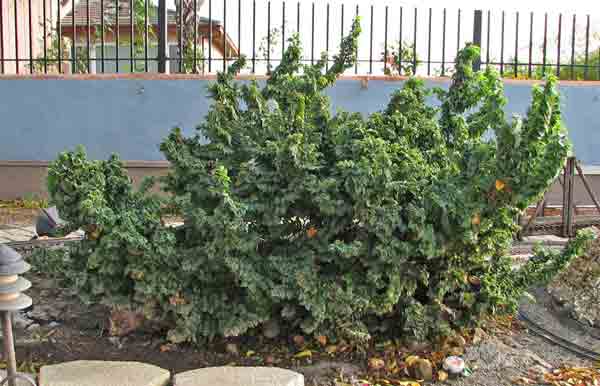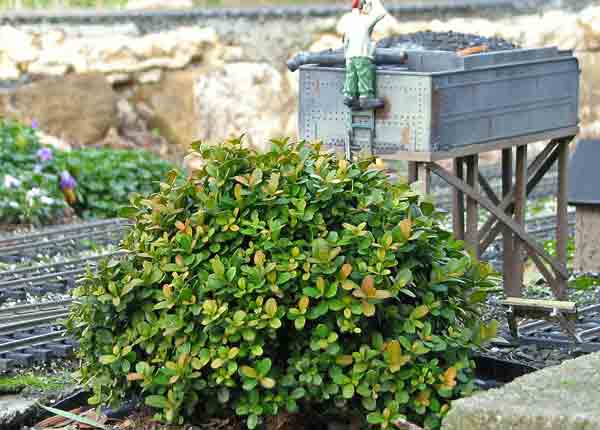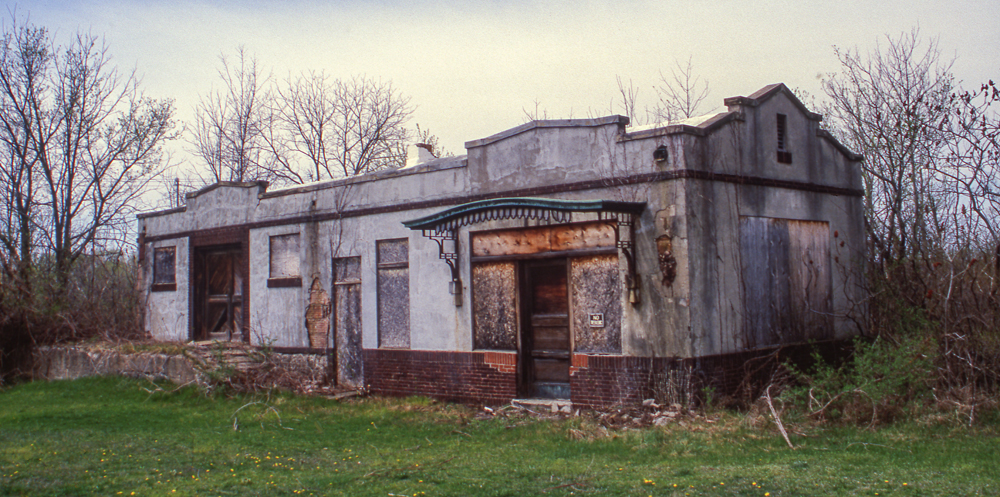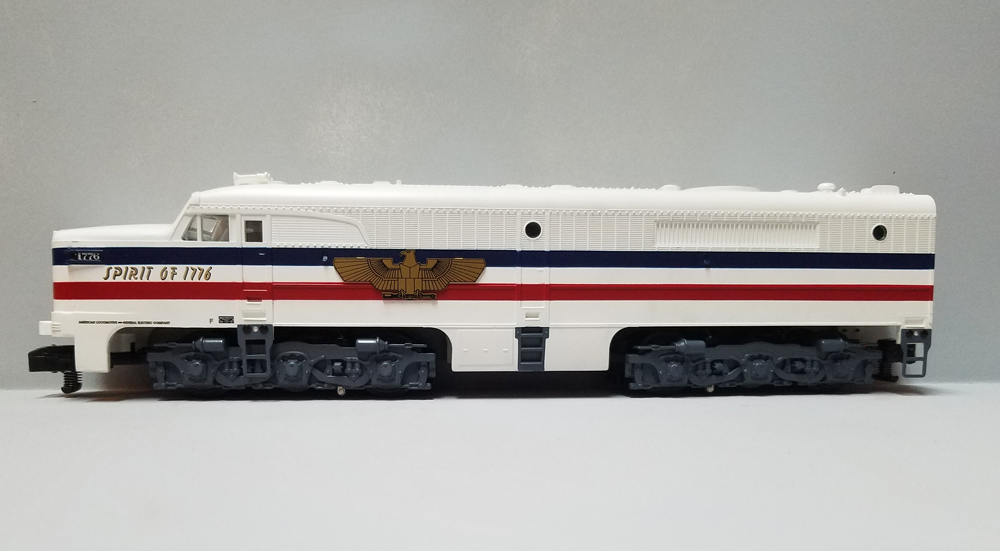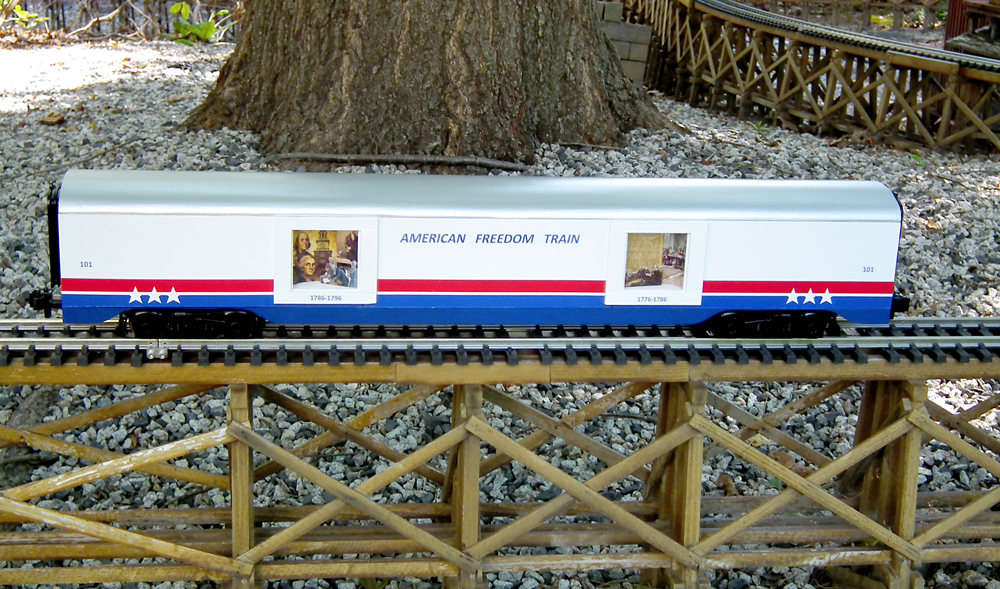Tired of clipping back little scale trees and fending off groundcover? Let them grow! Let shrubs, subshrubs, and herbaceous perennials mound up a bit. True, they won’t show off as individual trees with trunks (the bonsai-trees-over-moss effect). Instead, let humble shrubbery create the broad-palette approach. Here we’ll explore both woody and herbaceous perennials that, when massed, give the impression of scrub, forest, or groves. Then we’ll look at the smallest bushes—scale, cushion-like plants that act as foundation shrubbery to accent your structures without obscuring them.
Aromatic herbs
In the “real” world, railroads carve sunlit passages through the woods, then birds and wind introduce young, trackside seedling trees, represented by Chip and Sue Gierhart’s kitchen herbs in photo 1. Too soon for trunks yet, stems lean against one another, vying for sun and creating a thicket. In the garden railway, herbaceous perennials will require annual cutting back (harvesting) so that fresh top growth can repopulate the trackside in spring. These edible herbs, like oregano, thyme, and marjoram, can get a bit rangy until you need some soup or salad greens, so plant accordingly so as not to hide choice details. Cut off two-thirds or more of the tops in the fall.
The grounds adjacent to industrial buildings may not be manicured and scrub growth sometimes takes over. To landscape his gristmill, Gary Condry grows a herbaceous perennial that offers both scrub and blooming “cherry” trees in one plant (photo 2).
Scrubby subshrubs
Heaths and heathers are good examples of subshrubs, characterized by compact, full-size growth with a basal network of woody stems. Each spring, terminal soft growth and flowers sprout for a season, then die back with frost and await shearing. In contrast to their vast forest of bonsai-type trees, Rex and Carla Ploederer planted heathers, in full bloom in photo 3, to brighten their rocky water feature. Mexican or false heather is another subshrub. In Don and MarilynPickett’s railway, I gave up trying to keep these looking like individual trees and gave in to their multi-stem nature (photo 4).
Artemisia subshrubs come in many forms and sizes, almost all covered in silver hairs. The wormwoods, Artemisia ‘Powis Castle’ (Zones 5-9, 2-3′ high) and A. versicolor ‘Sea Foam’ (Zones 4-10, 6-12″ high) are moderate-sized bushes for puffy, scale trees. A. viridis ‘Tiny Green’ stays under 8″. These artemisias don’t spread by seeds but by underground stems, as seen in Fran and Don Ferguson’s beautiful grove of variegated mugwort (A. vulgaris ‘Oriental Limelight, Zones 4-8—photo 5). Plant this one in poor soil to keep it from growing to its potential 4-6′ high. If you live on “the cold edge” of the USDA Hardiness Zones, allow top growth to insulate subshrubs in winter, then remove terminal shoots down to live wood in spring.
Elegant evergreens
Gary and Mary Rutledge maintain a lovely, large yard and prefer to spend their time in the garden railway running live-steam trains. Their use of dwarf evergreen conifers (photo 6), planted on retaining walls of blocks or boulders, leaves no room for weeds. Of course, their mature garden took a few years to achieve this peaceful scale woods.
Likewise, evergreens form the backbone of greenery on JoJanet and Jack Lausterer’s lines, where broad outcroppings of stones keep it low maintenance (photo 7). Dwarf shrubbery surrounded by bark mulch suggests groves of small trees, and targets the trains for the focal point. If most of your landscape was this easy, you’d have the time to create the occasional sculpted tree near a special element to which you’d like to draw attention.
Micro minis
After setting up your buildings, figures, and accessories, appropriate-sized plants radiate life into the dioramas. To not occlude your artwork, take the time to find little shrubs that not only stay small but exhibit the right habitat you are modeling. For example, the three lined-up shrubs in photo 8 satisfy the city criteria for keeping the area tidy on Nigel Mallinson’s railroad. In contrast, the lush array of plants in photo 9 presents a sub-tropical, park-like setting within a greenhouse railroad. On a slope, more fluffy little shrubs can be squeezed into a scene in a grandstand-type of arrangement, as long as the lowest ones edge the architecture.
True dwarf plants can make a difference in easy-care landscaping. Look for tight growth, not too airy between branches. While dwarf plants grow slowly (3-6″ per year), miniatures are slowest (1/2-3″ per year) and are best for “foundation shrubs.” Succulent rosettes, like hen-and-chicks (Sempervivum sp., Zones 3-10), also work. For lists of miniature plants for your USDA Hardiness Zone, see “Greening your railway: Micro-miniatures Part 1: Trees and woody shrubs” (October 2010 GR). Chart 1 lists 19 miniature conifers, while chart 2 describes 19 miniature broadleaf woody shrubs. Or, find these lists in my Miniature Garden Guidebook www.kalmbachstore.com/12444.html
Nature rules. Plants will grow according to their genetics and the conditions you provide for them. If your nature dislikes fussiness and crouching on the ground to maintain skeletonized bonsai trees, give in. Shrubby trees, if dwarf or miniature, are quite accommodating.
Regional gardening reports
Zones listed are USDA Hardiness Zones
What plants do you choose to model very low shrubbery?
Keith Yundt
Victoria, British Columbia, Canada, Zone 6
Forming a formal garden
We wanted to create a sort of English formal garden, with the various patterns and geometric designs that make them interesting. Plants are pretty much all sedums and other succulents for low deer desirability and full sun hardiness. That back row is a narrow hedge of yew (Taxus sp.) stem cuttings I stuck in for fun during the open house.
I documented the progress in pictures that were taken during construction. You can read the full story and several how-to photos here.
Sue Piper
Lakeside, California, Zone 9-10
Life in Deadwood
The little gray sedum-like bush was a free sample given out during a San Diego Garden Railway Society event at the Quail Botanical Gardens in Encinitas, California, several years ago. Even the experts there have no idea what its name is. It looks delicate but is a hardy, slow-growing plant that has lovely, tiny, white blooms in season.
Fellow club members Eddie and Faye Broz gave me the haworthia in the forefront. They originally purchased one from a small nursery while on vacation. Eddie calls it Hiawatha. It is extremely hardy, multiplies often and requires very little water. An amazing surprise is when it blooms the first time for you! It sends out a thin stem, 8 to 10″ long, with tiny blooms that last for several days!
Ray Turner
San Jose, California, Zone 9
Tucked between tracks
I have slightly pruned the dwarf pagoda holly each year, mainly to keep it off the track. It is probably three-to-four years old. Without a trunk, it makes a good view block of the track just to the rear.





